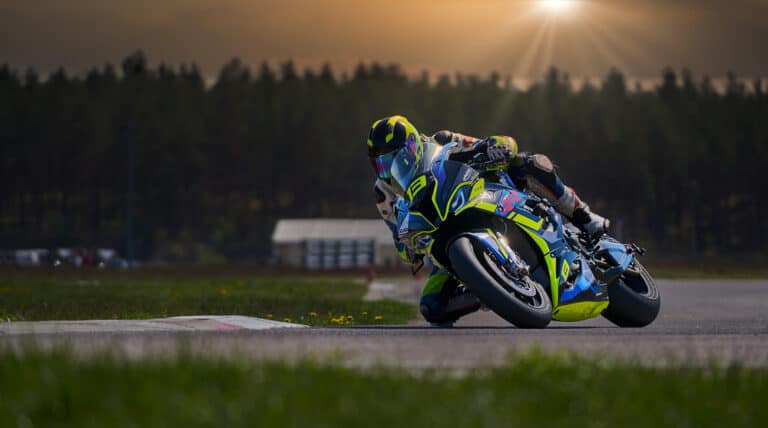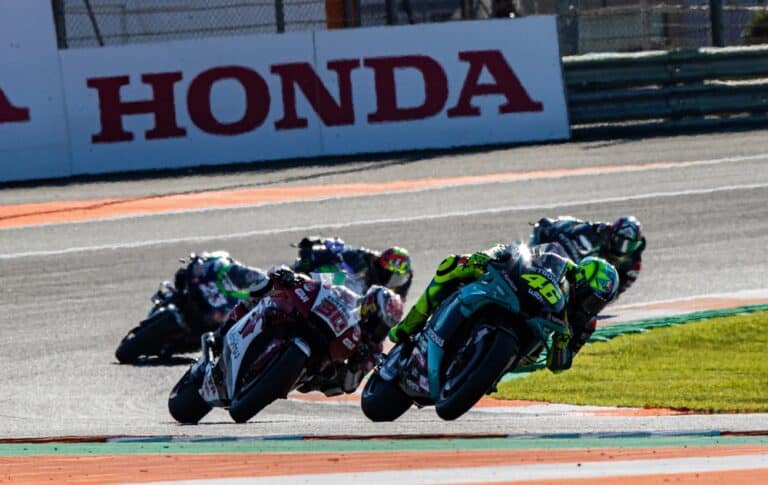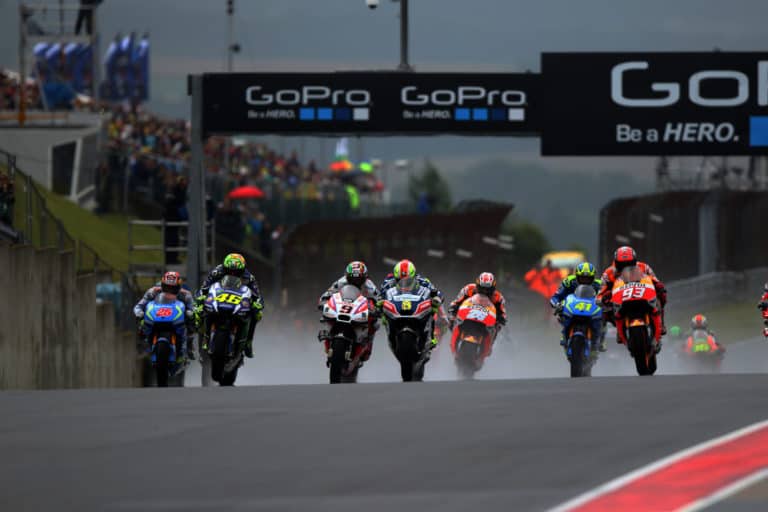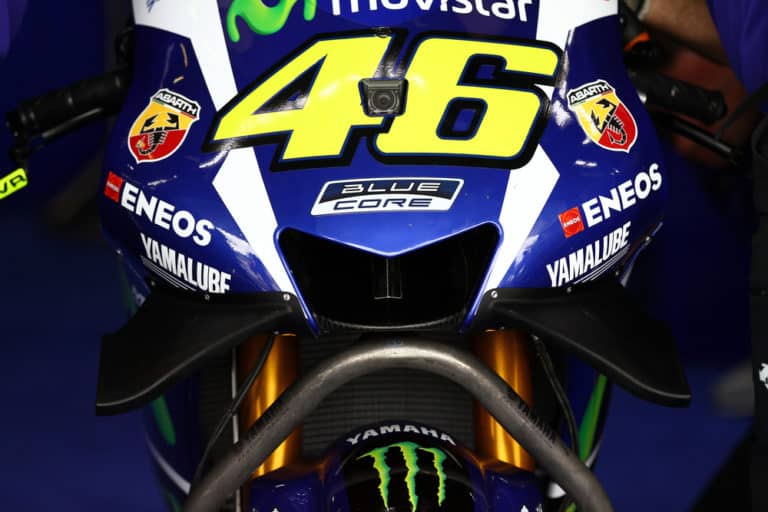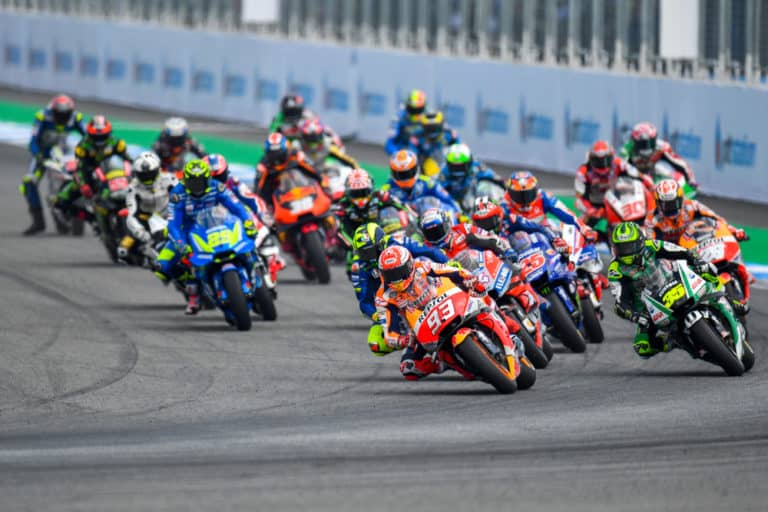Editorial credit: Rainer Herhaus / Shutterstock.com
I have been a motorsport fan for decades. However, I only started watching MotoGP fairly recently by comparison. One thing that initially confused me was that I saw pit stops only occasionally happening in races. I learned more about the few times pit stops did happen in MotoGP and why.
The general rule is that there are no pit stops in MotoGP races. However, there are a few limited exceptions where pit stops are permitted for the safety of the riders and the event. The most common of these is when it starts raining and riders need to switch to bikes set up for racing on a wet track.
Let’s take a closer look at those specific conditions when pit stops in MotoGP are permitted.
Do MotoGP Have Pit Stops
There are no standard pit stops in MotoGP. This means that the outcome is less about team strategy and more about head-to-head racing in its simplest form that we can just watch and enjoy at face value.
Another way that MotoGP keeps the racing exciting to watch is having no team radio for communication between teams and riders. Teams need to rely on using pit boards that riders read in the split second they flash past the pits.
If there is a change in weather conditions such as rain on a dry track or a wet track becoming dry, the race marshals will show a white flag at all marshal posts indicating that the pit lane is open for riders to switch bikes. All teams have bikes set up for wet and dry conditions so it is a very quick change for the riders to change bikes and continue racing.
Why Are There No Pit Stops In MotoGP
The length of MotoGP races is such that it is unnecessary to have pit stops for either tire changes or refueling. However, MotoGP uses a “Flag-To-Flag” system to cover any changes in weather conditions mid-race so that riders can be on bikes set up for the weather/track conditions for safety reasons.
The reason for banning pit stops in MotoGP except for those covered by the flag-to-flag safety protocol is the same reason MotoGP doesn’t allow team radio communication with the riders. It makes for more exciting racing as riders need to adapt their race strategy based on events as they unfold on the track.
That is part of what makes MotoGP so appealing to me. I can enjoy the close head-to-head battles out on the track where positions can change multiple times each lap.
What Happens If It Starts Raining During A MotoGP
There are different MotoGP protocols in place for when it starts raining based on when it starts raining and how severe the rainstorm is. This is all based on the following extract from the IRTA rule book.
[quote] “climatic conditions and their severity can never be accurately forecast Race Direction may react to specific situations by issuing different instructions. All instructions will be displayed on timekeeping monitors and teams will be informed by IRTA staff”
If it starts raining before the riders start their warmup and formation lap, the race direction will declare it a wet race, and the riders will begin with their bikes on a wet weather setup.
In the next scenario, the rain holds off until the riders have completed their warmup and formed up on the grip, and then begins to fall. Race direction will then declare a wet race and the pit lane will reopen for riders to switch to wet weather setups for their bikes. Once the severity of the storm has been determined race direction will allow the bikes back out onto the track for new sighting and warmup laps before forming on the grid for a delayed start.
For safety reasons, bikes will not be allowed out onto the track until it is confirmed that there is no standing water on the track.
The third scenario is where the race is already on and it starts raining. As soon as it starts raining, track marshals will begin waving the red and yellow striped flag – the surface flag. This flag warns riders that the track surface has become slippery. If the race director deems the conditions to be too wet for the overall safety of the race, instruction will be given to open the pit lane for riders to be allowed to change their bikes. Track marshals will then wave the white flag which indicates to the riders that the pit lane is open for them to change bikes to a wet-weather setup.
Seeing a white flag does not make it obligatory that all riders must go into the pits to change bikes. It remains optional to them. If a rider feels as if they have sufficient grip and that the track will soon be dry again, they can choose to stay out on a dry weather setup. Coming into the pits to change onto a wet setup will cost a rider between 30 seconds and 45 seconds, depending on the length of the pit straight.
If there are only a handful of laps left a rider can choose to stay out, lapping 8 to 10 seconds per lap slower still beating the faster bikes on a wet setup.
One interesting aspect of the rule is that if a rider comes in to change over to a wet setup, they must leave the pits with wet weather tires on their bike. The reverse holds true if they are coming in to switch from a wet setup to a dry setup should the rain stop and the track dries out.
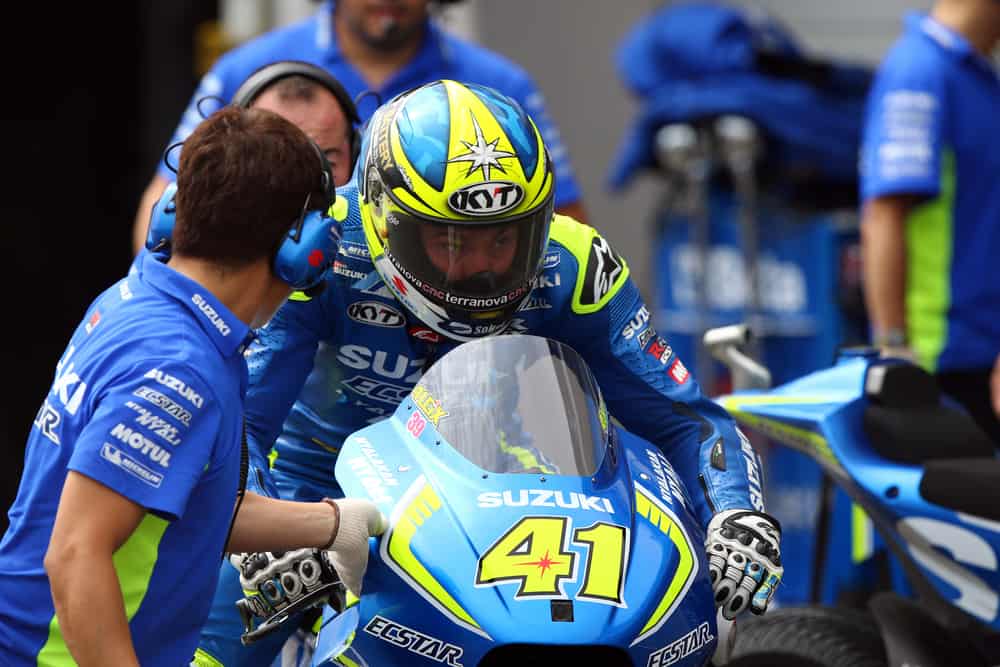
Another Reason For MotoGP Pit Stops During A Race
There was a rather unique situation that happened during the 2013 Australian MotoGP. Bridgestone was analyzing the tires coming off the bikes all through practice and qualifying and made the call that they could not guarantee the rear slick tires beyond 10 laps of racing.
As a result, the race director shortened the MotoGP from 27 laps down to 19 laps with a compulsory pit stop either at the end of lap 9 or lap 10 for a bike change to a new set of slick tires. No rider was permitted to go beyond 10 laps on a set of tires.
As part of the announcement, the race direction stated that a weather change to a wet track would be a red flag with the race restarting as all the teams had their spare bikes set up for dry conditions. If the restart was for more than 10 laps riders would still need to pit at the end of lap 9 or 10 to change bikes onto fresh wet (or dry) tires depending on track conditions.

